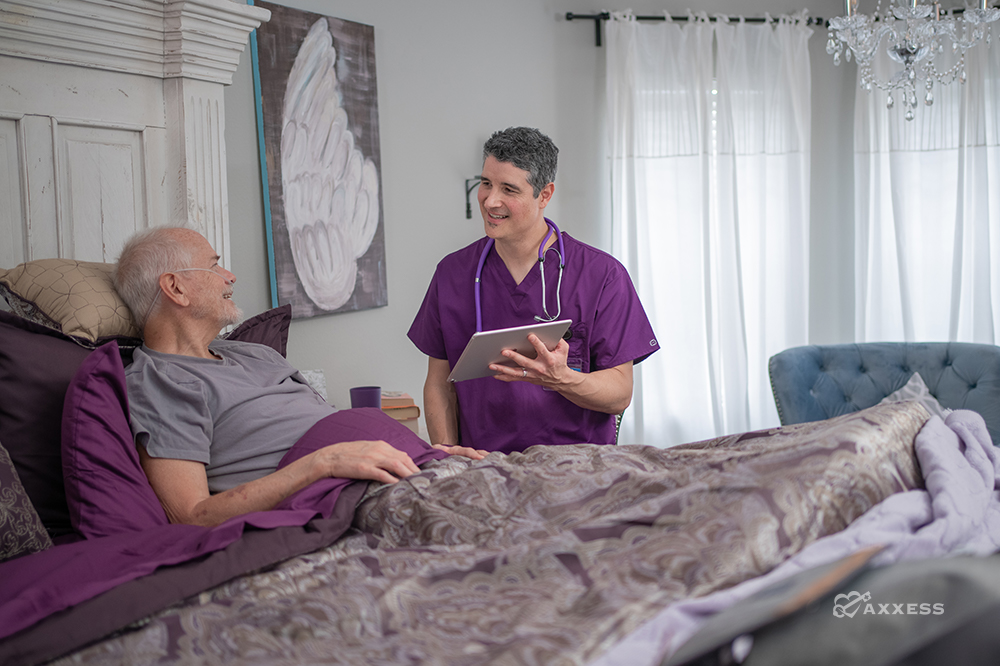
Under the Patient-Driven Groupings Model (PDGM), much of the data that impacts the Health Insurance Prospective Payment System (HIPPS) code and reimbursement – including episode timing, referral source, clinical group, and comorbidity – comes from claim information.
The other reimbursement variable, functional impairment level, continues to be derived from Outcome and Assessment Information Set (OASIS) data documented at the start of care (SOC), resumption of care (ROC), and recertification timepoints. Since a new OASIS is not collected at the beginning of each billing period, OASIS assessments often have an impact on both billing periods in the care episode. In fact, the financial contribution of OASIS data can be greater than $1,000 throughout the two billing periods.
In addition to reimbursement dollars at stake, agencies will not be rewarded with a five-star score that represents patient improvement without collecting and submitting accurate OASIS data.
Often the struggle for clinicians, particularly those who are new to OASIS documentation, is how to efficiently and accurately collect the information needed to score the OASIS questions.
The Key to an Accurate OASIS Functional Assessment
The patient must be up and moving throughout the home during the evaluation process. It has been said that therapists tend to score OASIS items more accurately because they are more inclined to have patients demonstrate their abilities and level of safety, whereas nurses may be more inclined to ask patients to tell them how well they move and perform activities of daily living (ADL). All clinicians performing OASIS assessments must have the patients “show me” how they perform tasks rather than the more passive approach of “tell me.”
The interactive “show me” approach is more accurate and prevents assessors from underscoring key OASIS items, which can decrease revenue and hinder the ability to show improvement over time.
Room-by-Room Approach to the OASIS Functional Assessment
One great method of collecting the information needed for the PDGM Functional Impairment questions is approaching the task on a room-by-room basis. We recommend printing our PDGM OASIS Functional Assessment Tool for continuous reference of codes and recommended verbal prompts.
- Typically, we first meet and speak with patients in their living room; we can ask them to get up from their chair and show us around the home. With one simple request, we have gathered information about the patient’s ability to come from sit-to-stand position and ambulate.
- Asking patients to show us to their bedroom puts us in the correct environment to show how they gather, don and doff their clothing every day. We now have the information that we need to respond to the two dressing questions, M1810 and M1820. Remember, these questions include obtaining the clothes, putting them on and taking them off, including shoes and socks.
- Also while in the bedroom, we should ask the patient to show us how they get into and out of bed in order to complete M1860, transferring. Even though they are not PDGM-related, we can also assess some of the GG mobility items while the patient is in bed.
- The final key environment in which we need to assess the patient is their bathroom. Safety in the bathroom is extremely important with the geriatric population, so we need to be very mindful in this environment. Observing the patient get on and off the toilet (M1840), into and out of the shower or tub (if safe) (M1830) and accessing their grooming supplies (M1800) are all tasks that can only be done by having the patient show you their abilities when in the bathroom.
Please note: Responses of “0,” indicating that the patient is independent with these challenging tasks, should be the exception rather than the rule.
Combine Assessments Makes It Easier on Patients
The OASIS assessment does not need to be in a vacuum. It can (and should) be integrated into your comprehensive assessment. For example, when the patient has removed their shoes and socks for you to assess their ability to dress their lower body, this is an ideal time to also check their pedal pulses and their lower extremities for edema. Similarly, when the patient lies down in bed and rolls from side to side for you to assess GG170C, you can check their lumbar and sacral skin integrity.
All patients are different, and all assessments will unfold in a different manner, but an accurate and meaningful OASIS assessment is crucial to your agency’s reimbursement funds, and more importantly, your patients’ safety.
Axxess provides resources and guidance to help your agency succeed under PDGM and take better care of your patients with an innovative home health software.
